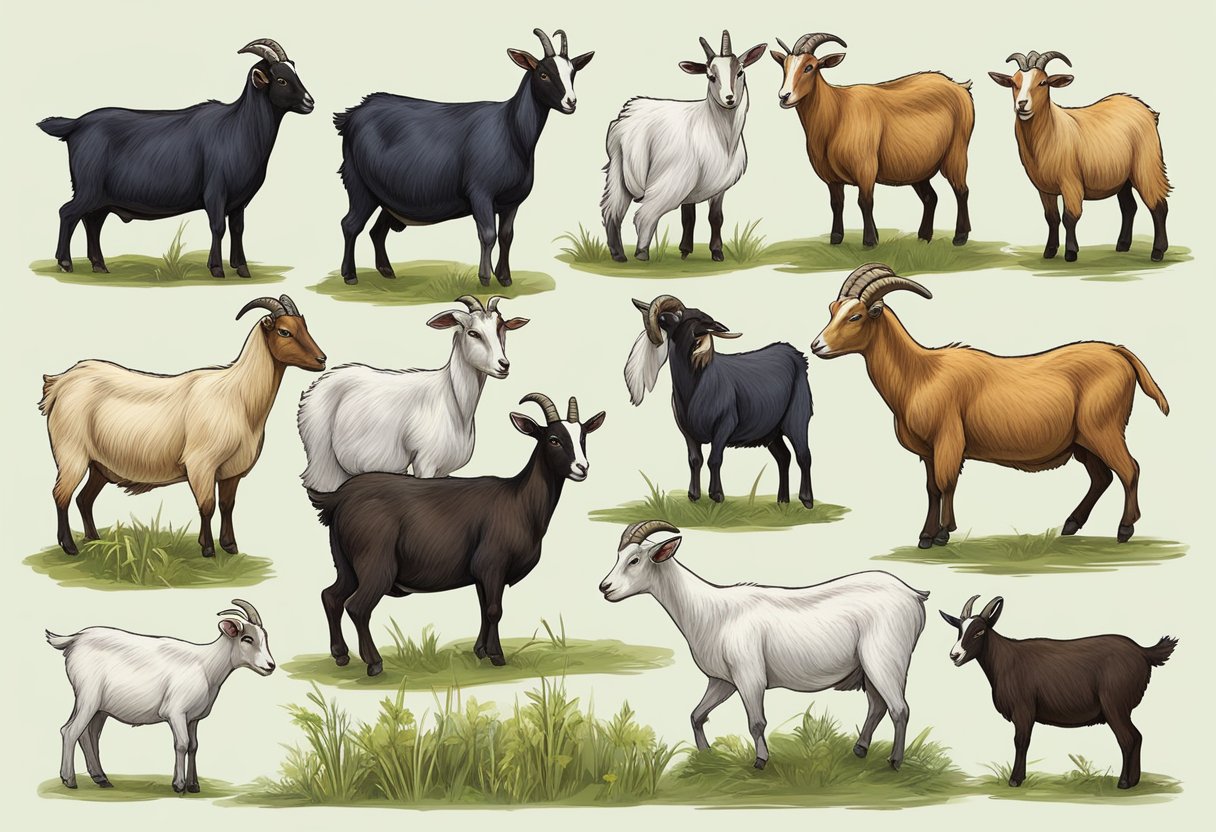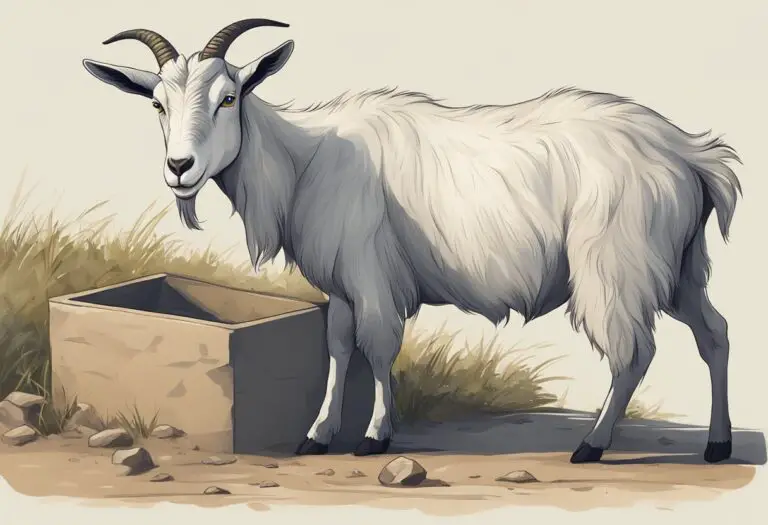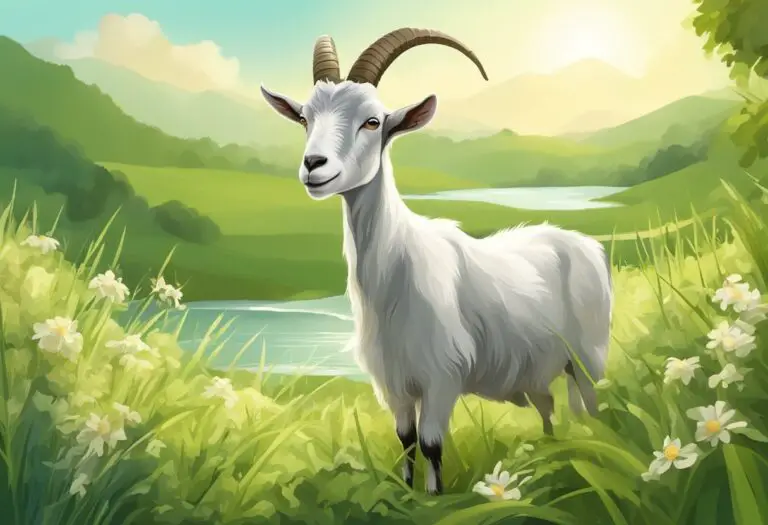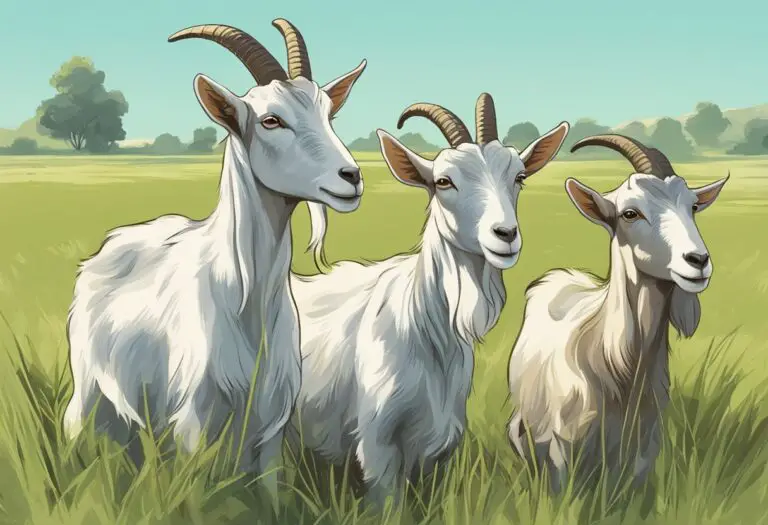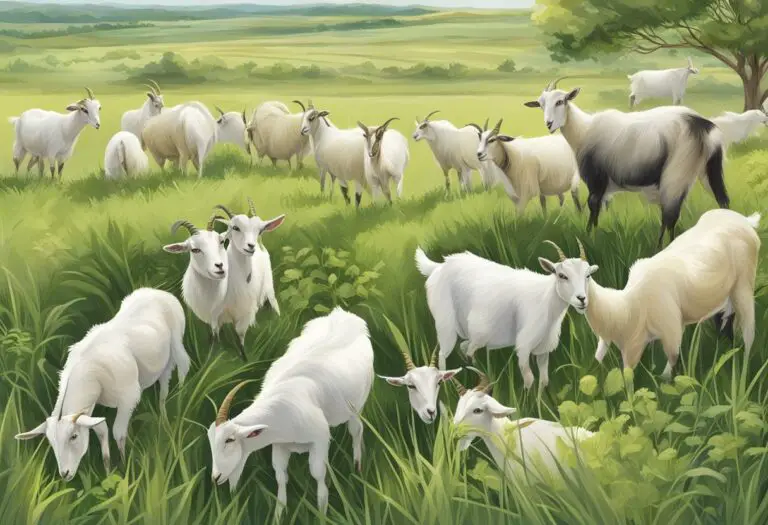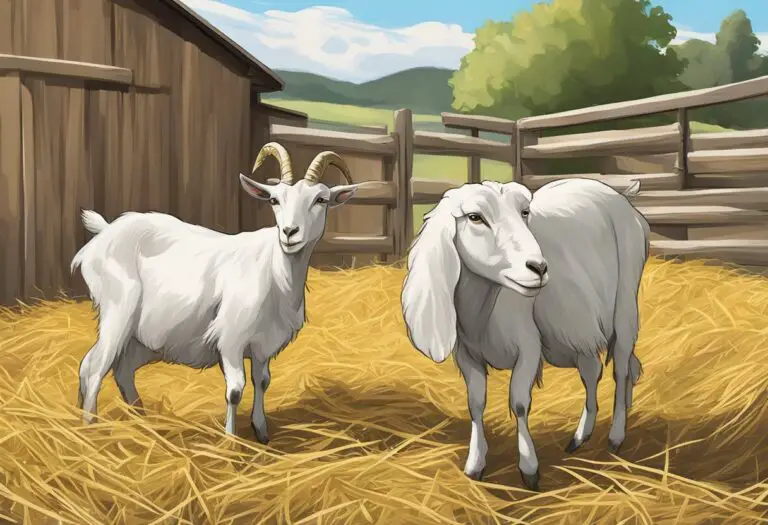Does the Breed of Goat Affect Their Nutritional Needs?
Goats are one of the most widely kept livestock animals in the world. They are raised for their meat, milk, and fiber. However, different breeds of goats have different nutritional needs. The breed of goat can affect the amount and type of feed they require to maintain good health and productivity.
Nutrition is essential for the growth and development of goats. It is important to provide them with a balanced diet that meets their nutritional requirements. The nutritional needs of goats depend on various factors, including their age, sex, weight, and breed. Therefore, it is essential to understand the nutritional requirements of different breeds of goats to ensure their optimal growth and productivity. This article will explore whether the breed of goat affects their nutritional needs and provide insights into the nutritional requirements of different goat breeds.
Fundamentals of Caprine Nutrition

Caprine nutrition is a crucial aspect of goat farming. Goats are ruminants, meaning they have a four-chambered stomach designed to break down fibrous plant material. However, their nutritional requirements are not the same as other ruminants like cows or sheep.
Macronutrient Requirements
Goats require a balanced diet of carbohydrates, proteins, and fats to maintain their health. The exact requirements vary depending on the age, weight, and breed of the goat. As a general rule, adult goats require a diet that is approximately 18% protein, 70% carbohydrates, and 12% fat.
Carbohydrates are the primary source of energy for goats. They can be found in grains, hay, and other forage. Proteins are necessary for muscle development and maintenance, and they can be found in sources such as alfalfa, soybeans, and other legumes. Fats are essential for energy and the absorption of fat-soluble vitamins. They can be found in sources such as vegetable oil and animal fat.
Vitamin and Mineral Essentials
In addition to macronutrients, goats require a variety of vitamins and minerals to maintain their health. A lack of these essential nutrients can lead to a variety of health problems.
Vitamins are organic compounds that are necessary for various metabolic functions. Vitamins A, D, and E are essential for goats. Vitamin A is necessary for vision, immune function, and growth. Vitamin D is necessary for calcium absorption and bone health. Vitamin E is necessary for immune function and acts as an antioxidant.
Minerals are inorganic compounds that are necessary for various metabolic functions. Calcium, phosphorus, and potassium are essential minerals for goats. Calcium is necessary for bone health, muscle function, and milk production. Phosphorus is necessary for bone and muscle development. Potassium is necessary for muscle and nerve function, fluid balance, and acid-base balance.
In conclusion, the breed of goat can affect their nutritional needs. However, all goats require a balanced diet of macronutrients, vitamins, and minerals to maintain their health and productivity. It is essential to provide goats with a diet that meets their specific nutritional requirements to ensure their well-being.
Breed-Specific Nutritional Needs

Different breeds of goats have different nutritional needs based on their primary use. This section will discuss the breed-specific nutritional needs of dairy, meat, and fiber goats.
Dairy Goat Nutrition
Dairy goats require a diet that is high in energy, protein, and calcium to support milk production. They also need adequate amounts of phosphorus, vitamin D, and magnesium. A diet that is deficient in any of these nutrients can lead to decreased milk production and poor milk quality.
Some common feeds for dairy goats include alfalfa hay, corn silage, and soybean meal. It is important to note that dairy goats should not be fed diets that are high in carbohydrates, as this can lead to metabolic disorders such as ketosis.
Meat Goat Nutrition
Meat goats require a diet that is high in energy and protein to support growth and muscle development. They also need adequate amounts of minerals such as copper, selenium, and zinc. A diet that is deficient in any of these nutrients can lead to poor growth rates and increased susceptibility to diseases.
Some common feeds for meat goats include corn, soybean meal, and hay. It is important to note that meat goats should not be overfed, as this can lead to obesity and decreased meat quality.
Fiber Goat Nutrition
Fiber goats, such as Angora goats, require a diet that is high in fiber to support their unique digestive system. They also need adequate amounts of protein and minerals such as copper and zinc. A diet that is deficient in any of these nutrients can lead to poor fiber quality and decreased weight gain.
Some common feeds for fiber goats include hay, alfalfa pellets, and soybean meal. It is important to note that fiber goats should not be fed diets that are high in carbohydrates, as this can lead to digestive disorders such as bloat.
In conclusion, different breeds of goats have different nutritional needs based on their primary use. It is important for goat owners to understand these breed-specific nutritional needs to ensure optimal health and production.
Influences of Breed on Dietary Preferences

Foraging Behavior
The breed of a goat can have a significant impact on their foraging behavior, which can affect their nutritional needs. For instance, some breeds are more inclined to browse on leaves and shrubs, while others prefer to graze on grass.
Goats that are bred for meat production, such as Boer goats, tend to have a more aggressive foraging behavior, which means they will eat a wider variety of plants. On the other hand, dairy goat breeds like Alpine goats are known to be more selective in their foraging behavior, preferring to graze on high-quality grasses.
Feed Efficiency
Feed efficiency is another factor that can be influenced by breed. Some goat breeds are more efficient at converting feed into body weight than others. This means that they require less feed to maintain their body weight and nutritional needs.
For example, the Spanish goats are known for their excellent feed efficiency, which allows them to thrive on low-quality forage. In contrast, dairy goat breeds like Saanen goats have higher nutritional requirements and need a more balanced diet to maintain good health and milk production.
In conclusion, the breed of a goat can have a significant impact on their dietary preferences, foraging behavior, and feed efficiency. It is important for goat owners to understand these differences to ensure that their goats are receiving the appropriate nutrition to maintain good health and productivity.
Nutritional Management Across Breeds

Feeding Strategies
The breed of goat can have a significant impact on their nutritional needs. For instance, dairy goats require a higher level of energy and protein in their diet compared to meat goats. Therefore, it is essential to consider the breed of goat when developing a feeding strategy.
One feeding strategy that can be used across breeds is to provide high-quality forage. This can include hay, silage, and pasture. Providing a variety of forages can help ensure that goats receive all the necessary nutrients. Additionally, it is important to provide access to clean water at all times.
Another feeding strategy is to provide a balanced concentrate feed. The concentrate feed should be formulated based on the breed and age of the goat. It should contain a mix of proteins, carbohydrates, vitamins, and minerals. The concentrate feed can be fed alongside forage or as a complete feed.
Supplementation Practices
Supplementation practices can also vary depending on the breed of goat. For instance, dairy goats may require additional supplementation of calcium and phosphorus to support milk production. Meat goats, on the other hand, may require additional supplementation of copper to prevent copper deficiency.
It is important to consult with a veterinarian or animal nutritionist to determine the appropriate supplementation practices for your breed of goat. Over-supplementation can lead to toxicity and health issues, while under-supplementation can lead to nutrient deficiencies.
In conclusion, the breed of goat can have a significant impact on their nutritional needs. Developing a feeding strategy that considers the breed and providing appropriate supplementation can help ensure that goats receive all the necessary nutrients for optimal health and production.
Health Implications of Nutritional Choices

Goats are a unique species with diverse nutritional needs that vary depending on their breed. Nutritional choices can have significant health implications for goats, and it is crucial to understand how different diets can affect their health.
Disease Prevention
Proper nutrition is essential for disease prevention in goats. A balanced diet that meets the nutritional requirements of the breed can help boost the immune system and prevent diseases. For instance, copper deficiency can cause anemia and susceptibility to infections in goats. On the other hand, excess copper can be toxic to goats. Therefore, it is crucial to provide goats with a balanced diet that meets their nutritional needs to prevent diseases.
Growth and Reproduction
Nutrition plays a critical role in the growth and reproduction of goats. Proper nutrition during pregnancy can improve the health of both the mother and offspring. For instance, insufficient calcium and phosphorus can lead to metabolic disorders in pregnant goats, such as milk fever. On the other hand, overfeeding pregnant goats can lead to obesity and other health problems. Therefore, it is essential to provide pregnant goats with a balanced diet that meets their nutritional needs.
In conclusion, goats have unique nutritional needs that vary depending on their breed. Nutritional choices can have significant health implications for goats, and it is crucial to understand how different diets can affect their health. By providing goats with a balanced diet that meets their nutritional needs, farmers can prevent diseases and promote healthy growth and reproduction.
Economic Considerations of Feeding Different Breeds

Feeding different breeds of goats can have economic implications for farmers. Nutritional requirements vary based on the breed, age, and weight of the goat. Some breeds require higher quality feed and supplements to maintain their health and productivity, which can increase the cost of feeding.
For example, dairy goat breeds such as Saanen and Alpine require a diet high in protein and energy to produce milk. This means that farmers need to invest in high-quality feed and supplements to meet their nutritional needs. On the other hand, meat goat breeds such as Boer and Spanish require less expensive feed and can thrive on lower quality forages.
In addition, the cost of feed can vary based on the availability and accessibility of different types of feed in a particular region. Farmers may need to import feed or supplements to meet the nutritional needs of certain breeds, which can increase their expenses.
Therefore, farmers need to carefully consider the nutritional requirements of different breeds of goats and the cost of meeting those requirements when making decisions about breeding and feeding practices. By selecting breeds that are well-suited to their local environment and resources, farmers can optimize their production and profitability.
Research and Future Directions in Caprine Nutrition

Research in caprine nutrition has been ongoing for many years, with a focus on understanding the nutritional requirements of different breeds of goats. While there is some evidence to suggest that breed can affect nutritional needs, the research in this area is limited and inconclusive.
One area of research that has shown promise is the use of feed additives to improve the nutritional quality of goat feed. For example, studies have shown that adding probiotics to goat feed can improve digestion and nutrient absorption, leading to improved health and productivity.
Another area of interest is the use of alternative feed sources, such as forage crops and byproducts from other industries, to supplement traditional goat feed. This approach has the potential to reduce feed costs and improve sustainability in the goat industry.
Overall, there is still much to be learned about caprine nutrition, and future research is needed to better understand the nutritional needs of different breeds of goats and to develop more effective feeding strategies. By continuing to explore these areas of research, it may be possible to improve the health, productivity, and sustainability of the goat industry.

